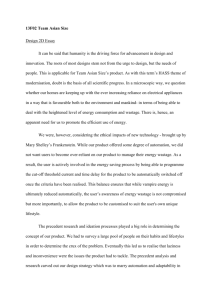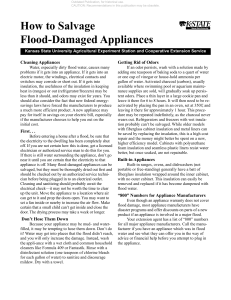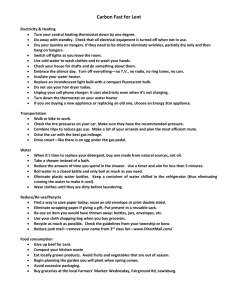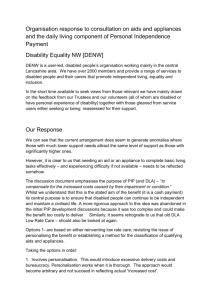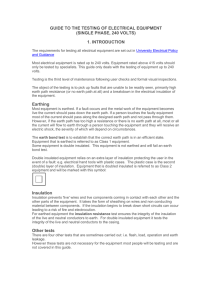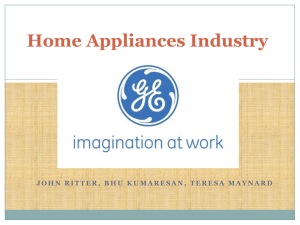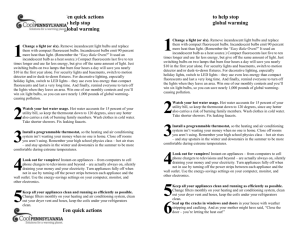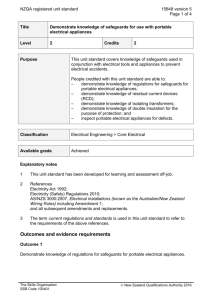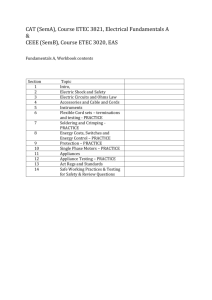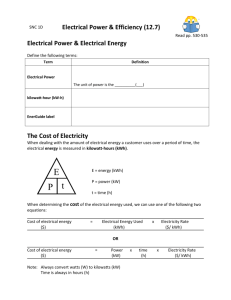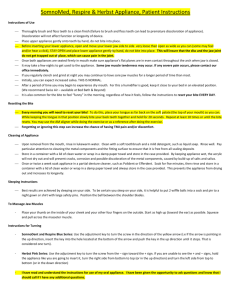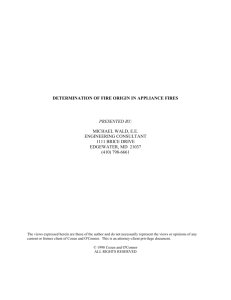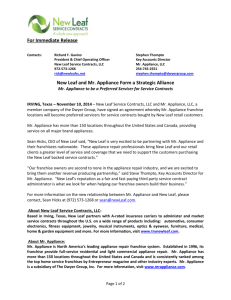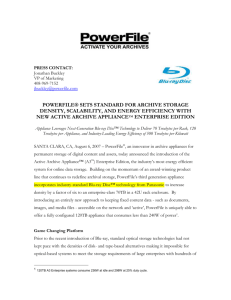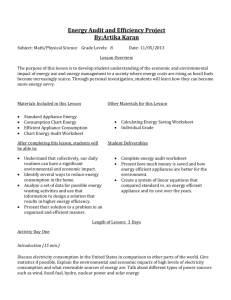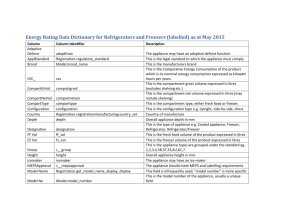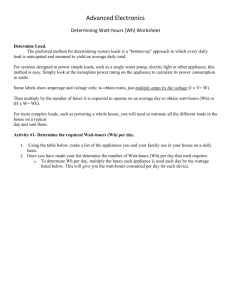Activity 2.5.4 Green Problems
advertisement
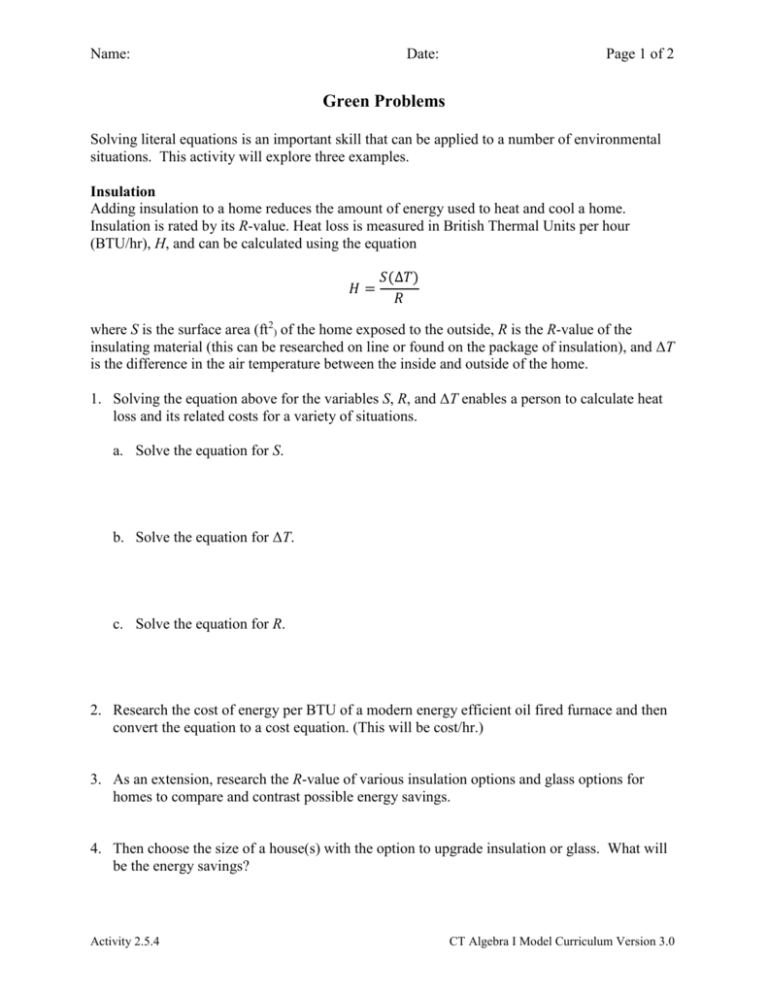
Name: Date: Page 1 of 2 Green Problems Solving literal equations is an important skill that can be applied to a number of environmental situations. This activity will explore three examples. Insulation Adding insulation to a home reduces the amount of energy used to heat and cool a home. Insulation is rated by its R-value. Heat loss is measured in British Thermal Units per hour (BTU/hr), H, and can be calculated using the equation 𝐻= 𝑆(∆𝑇) 𝑅 where S is the surface area (ft2) of the home exposed to the outside, R is the R-value of the insulating material (this can be researched on line or found on the package of insulation), and ΔT is the difference in the air temperature between the inside and outside of the home. 1. Solving the equation above for the variables S, R, and ΔT enables a person to calculate heat loss and its related costs for a variety of situations. a. Solve the equation for S. b. Solve the equation for ΔT. c. Solve the equation for R. 2. Research the cost of energy per BTU of a modern energy efficient oil fired furnace and then convert the equation to a cost equation. (This will be cost/hr.) 3. As an extension, research the R-value of various insulation options and glass options for homes to compare and contrast possible energy savings. 4. Then choose the size of a house(s) with the option to upgrade insulation or glass. What will be the energy savings? Activity 2.5.4 CT Algebra I Model Curriculum Version 3.0 Name: Date: Page 2 of 2 Compact Fluorescent Light Bulbs Replacing traditional light bulbs with compact fluorescent light bulbs (CFL) reduces household electricity consumption, lowers electric bills, and reduces your home’s carbon footprint. A 23 watt CFL produces the same amount of light as a 100 watt standard bulb. 5. Find the cost of electricity at: http://www.energy.gov. The same site has information about “energy star” and cost comparisons between the two types of light bulbs. 6. Write an equation that relates the hours of use per day to the savings per day for a given number of bulb replacements. Solve the equation to see how many bulb replacements you would need to save $100 per year. Energy Efficient Appliance Purchase Newer appliances cost less to operate because they are more energy efficient. The formula 𝑠 = 𝑐𝑒 describes the cost, s, to operate an appliance for one year based on c, the cost of energy ($ per kwh), and e, the annual consumption of energy for the appliance (kwh/yr). Choose an appliance in your home. Research the annual consumption of energy for it and for various brands of more efficient appliances. Let 𝑒1 represent the energy consumption of your current appliance and let 𝑒2 represent the energy consumption of the more efficient appliance. If 𝑠1 represents the cost per year of the old appliance and 𝑠2 represents the cost per year of the more efficient appliance, then the amount you save by switching appliances is ℎ = 𝑠1 − 𝑠2 . 7. Find an equation for h in terms of c, 𝑒1 , and 𝑒2 . 8. Solve the equation for 𝑒1 in terms of c, 𝑒2 , and h. 9. Suppose you purchase the more efficient appliance. Use the cost of the new appliance and the energy savings per year to find how long it will take to break even on your new purchase. Activity 2.5.4 CT Algebra I Model Curriculum Version 3.0




